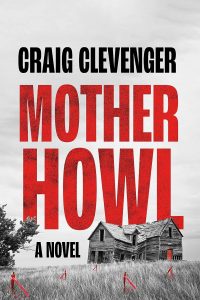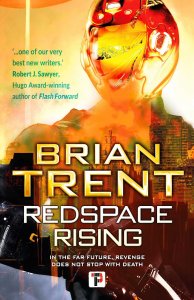Gary K. Wolfe Reviews Monstrous Alterations by Christopher Barzak
 Monstrous Alterations, Christopher Barzak (Lethe 978-1-59021-761-0, $20.00, 206pp, tp) September 2023.
Monstrous Alterations, Christopher Barzak (Lethe 978-1-59021-761-0, $20.00, 206pp, tp) September 2023.
Fiction which deliberately sets itself in dialogue with specific works of earlier fiction is an ancient tradition, but it often seems like catnip for SFF writers. Just in the last few years we’ve seen Nghi Vo on F. Scott Fitzgerald, Elizabeth Hand on Shirley Jackson, Kij Johnson on Kenneth Grahame and H.P. Lovecraft, John Kessel on Austen and Mary Shelley, and just about everyone else on fairy and folk tales. Going back a bit further, we could cite Le Guin on Virgil, Silverberg on Conrad, Benford on Faulker, and – why not? – Asimov on Edward Gibbon. We seem to have a lot of terms for this – redactions, variations, renditions, adaptations, revisionings, etc. – but the one preferred by Christopher Barzak is evident in the title of his fascinating new collection Monstrous Alterations. The collection is fascinating not only because of the quality and variety of the ten stories, but because it’s also something of a thesis with illustrations. Barzak’s introduction posits six specific strategies for such fiction – alterations of emphasis, perspective, setting, and language, as well as what he calls ‘‘remixes’’ (stories drawn from multiple sources) and ‘‘transformations’’ (in which the author has ‘‘filed off the serial numbers’’ to subtly disguise the source text). Each of the stories is prefaced by a quotation from the source, and Barzak’s story notes explore the specific techniques with which he spun new stories out of old. He even offers a very selective bibliography of earlier ‘‘alteration’’ texts, like Le Guin’s Lavinia or Maguire’s Wicked (though, curiously, not Ryman’s Was). It’s practically a syllabus, or maybe just the beginning of a great barroom argument, but it’s a lot of fun.
Only one of the stories draws on a Grimm fairy tale (except for ‘‘The Cure’’, a short variation on Red Riding Hood included as an example in the Introduction). ‘‘Sister Twelve: Confessions of a Party Monster’’ is a version of ‘‘The Twelve Dancing Princesses’’ told by the youngest. At first, it seems a fable of liberation, as the princesses escape each night not into fairytale ballrooms, but into actual clubs from different eras, such as Studio 54, the Copacabana, Whiskey-A-Go-Go, and CBGB, but ends on a fairly grim note of enforced gender roles. It may be the only actual fairy tale alteration, but two other stories draw on what is generally regarded as children’s literature: ‘‘The Boy Who Grew Up’’, in which the narrator briefly escapes his troubled home life after he meets the real Peter Pan, only to find his rebellious instincts tested; and ‘‘Dorothy Rising’’, set entirely during the interval in The Wonderful Wizard of Oz when Dorothy and her house are aloft in the tornado before she lands in Oz. It’s largely a meditation on the house itself, and Barzak’s acuity at uncovering social justice themes in his source material is apparent when the narrator tells us that years later Uncle Henry will lose his home to foreclosures, and that – in what felt to me almost like a somewhat jarring nugget of didacticism in an otherwise lyrical tale – ‘‘decades later, men in black suits and tight ties will still be taking homes from hardworking people.’’
Uncle Henry may seem an unexpected victim in the Oz story, but Barzak’s acute empathy for the marginalized is a hallmark of his fiction, and other stories are spun off from characters so minor that they were nearly invisible in thesource texts – examples of what Barzak calls alteration by perspective. ‘‘Invisible Men’’, drawn from Wells’s classic, is narrated by a maid at the country inn where the invisible man hides out, and raises the question of what invisibility really means in a society that simply refuses to see some of its members; Barzak’s story note comments that he was troubled by the almost parodic stereotypes of country folk in Wells’s original. ‘‘The Trampling’’ follows the later fortunes of the little girl who is trampled in the street by the raging Hyde in a brief scene from Dr. Jekyll and Mr. Hyde, and in a grim but moving tale of social realism, shows us how society continued to trample her for the rest of her short life.
Barzak’s advocacy for all sorts of outsiders is not limited to economic injustice, and he convincingly unfolds the queer subtexts of three of his sources: Poe’s ‘‘William Wilson’’, Charlotte Perkins Gilman’s ‘‘The Yellow Wall-Paper’’, and Christina Rossetti’s ‘‘Goblin Market’’ (although it’s hardly a subtext in the Rossetti poem). I suppose most of us remember ‘‘William Wilson’’ as Poe’s doppelgänger story, but in Barzak’s variation, titled ‘‘For the Applause of Shadows’’, the two William Wilsons actually become lovers, until the treachery of one turns the tale into a more baroque supernatural revenge tale, which effectively captures the sometimes-feverish tone of Poe’s prose. (Throughout Monstrous Alterations, Barzak more or less adopts the style and tone of the original, without ever quite resorting to imitation or parody.) Both ‘‘Eat Me, Drink Me, Love Me’’ (a title drawn from an actual line from the Rossetti poem) and ‘‘The Creeping Women’’ (his version of ‘‘The Yellow Wall-Paper’’) adopt the points of view of a sister and sister-in-law. The two sisters in ‘‘Goblin Market’’ explicitly become lovers in Barzak’s version, though they find themselves forced into more traditional roles as his version moves beyond the end of Rossetti’s poem. The gay sister-in-law who narrates ‘‘The Creeping Women’’ has faced repression by both her father and her brother, who marries Jane (whose journal entries make up the Gilman story). The marriage is a nightmare of gaslighting and repression, focused mostly on the husband’s efforts to thwart Jane’s desire to write, but also on the narrator’s passion for her.
The final two stories in the collection drift furthest from their source material. ‘‘The 24-Hour Brother’’ is what Barzak calls a ‘‘transformation,’’ with few direct clues to its source – which in this case is F. Scott Fitzgerald’s ‘‘The Curious Case of Benjamin Button’’. Like me, Barzak apparently found the tale of a character aging backwards as a bit of a gimmick, so he comes up with a gimmick of his own, resulting in the oddly touching and tragic ‘‘The 24 Hour Brother’’, whose narrator watches his younger brother Joe pass from birth through old age in a single 24-hour period. It combines some of the gonzo absurdity of Lafferty’s ‘‘Slow Tuesday Night’’ with a few echoes of progeria and a real sense of loss. ‘‘Kafka’s Circus’’ may be the most purely Barzak story in the book, even though it borrows freely from Kafka stories such as ‘‘The Hunger Artist’’ and ‘‘First Sorrow’’ (about a trapeze artist who wants never to come down). These and other alienated performers make up Kafka’s Circus, which the narrator hopes to join when it comes to town, but it may be that his real reason has to do with a Kafka piece that Barzak doesn’t explicitly mention, the pained and posthumously published ‘‘Letter to His Father’’; Barzak’s narrator seems to have some of the same problems with an emotionally abusive father that Kafka himself did. Whether it’s necessary to have read Kafka – or Fitzgerald, Poe, Wells, Rossetti, or any of the other source authors – is an individual reader’s decision. I decided early on not to reread these before reading Barzak’s versions, and his stories unarguably have their own power. But there’s little doubt that a book celebrating the grand dialogues of story-making gains resonance from at least a passing familiarity with the sources, and part of the beauty of Barzak’s accomplishment is the invitation to look at some classics in a radical new light.
Gary K. Wolfe is Emeritus Professor of Humanities at Roosevelt University and a reviewer for Locus magazine since 1991. His reviews have been collected in Soundings (BSFA Award 2006; Hugo nominee), Bearings (Hugo nominee 2011), and Sightings (2011), and his Evaporating Genres: Essays on Fantastic Literature (Wesleyan) received the Locus Award in 2012. Earlier books include The Known and the Unknown: The Iconography of Science Fiction (Eaton Award, 1981), Harlan Ellison: The Edge of Forever (with Ellen Weil, 2002), and David Lindsay (1982). For the Library of America, he edited American Science Fiction: Nine Classic Novels of the 1950s in 2012, with a similar set for the 1960s forthcoming. He has received the Pilgrim Award from the Science Fiction Research Association, the Distinguished Scholarship Award from the International Association for the Fantastic in the Arts, and a Special World Fantasy Award for criticism. His 24-lecture series How Great Science Fiction Works appeared from The Great Courses in 2016. He has received six Hugo nominations, two for his reviews collections and four for The Coode Street Podcast, which he has co-hosted with Jonathan Strahan for more than 300 episodes. He lives in Chicago.
This review and more like it in the November 2023 issue of Locus.
 While you are here, please take a moment to support Locus with a one-time or recurring donation. We rely on reader donations to keep the magazine and site going, and would like to keep the site paywall free, but WE NEED YOUR FINANCIAL SUPPORT to continue quality coverage of the science fiction and fantasy field.
While you are here, please take a moment to support Locus with a one-time or recurring donation. We rely on reader donations to keep the magazine and site going, and would like to keep the site paywall free, but WE NEED YOUR FINANCIAL SUPPORT to continue quality coverage of the science fiction and fantasy field.
©Locus Magazine. Copyrighted material may not be republished without permission of LSFF.






